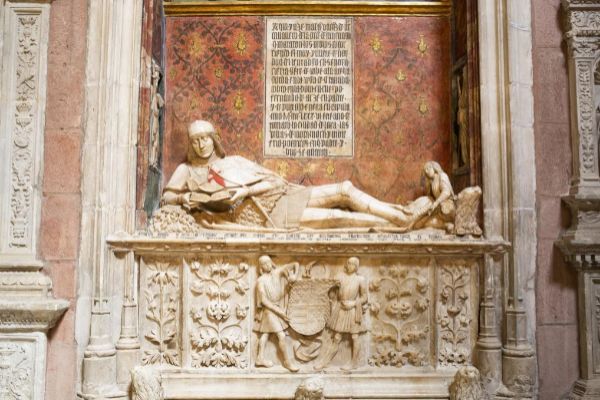After Toledo and Cuenca, Sigüenza. The medieval village will fight to conquer the title of UNESCO World Heritage City , as announced this morning by the president of Castilla-La Mancha, Emiliano García-Page, in the iconic 12th-century castle converted into a National Parador. "In Spain, we have the ability to turn our past into the best opportunity for our future," he said.
A century ago, Miguel de Unamuno already praised the "tradition made stone" of Sigüenza, a stone that "becomes soul." Unamuno toured the medieval streets, the arcades, the castle and the gardens with Don Quixote as a spiritual guide, "invisible and silent by my side." Although it could have been El Cid. Little has changed the landscape since then. And the goal is to discover it to the world.
«Sigüenza is that great unknown ... We have a landscape almost intact since the Middle Ages . If you study its Cathedral you have the history of Spain through its bishops, architecturally you can travel through the Muslim world until the 19th century, there are Romanesque and Renaissance jewels ... Sigüenza has a lot to offer. Here the spelled is still cultivated just as it was in the Middle Ages. And we also have two Michelin stars, ”says Ana Vanesa Martín, Deputy Minister of Culture of Castilla-La Mancha.
In 1986, Toledo was the first city of Castilla-La Mancha to be recognized as a World Heritage Site and in 1996 Cuenca arrived. While Sigüenza is preparing for the IX Centenary of the Reconquest, which will be held in 2024 and will position it as one of the cultural capitals of Spain (even El Prado will land on its streets), since the Board is already working to promote scientific work and research that conquers UNESCO. «It is a long process, which can last for years. We will be very rigorous and, of course, we will go hand in hand with the segunctine society, ”says Martín.
The Sigüenza operation will be promoted from administrations regardless of political colors, the university, cultural entities and civil society. Here is the leadership of Antonio Fernández-Galiano , president of the Editorial Unit, with a strong personal relationship with Sigüenza, which he defines as "an eternal city."
An eternity that already seduced the philosopher José Ortega y Gasset, who compared the Castilian lands "with the shoulders of a giant." It was in Sigüenza, in the summer of 1910, when Ortega y Gasset - then he was 27 years old - prepared his oppositions to the Chair of Metaphysics of the Complutense of Madrid. Between the Romanesque and the Gothic Cathedral, Ortega y Gasset came to praise the Sepulcher of the Doncel - the tomb of Martín Vázquez de Arce - as «the most beautiful funeral sculpture in Spain». A delicate alabaster sculpture of unknown, anonymous authorship such as El cantar del Mío Cid, whose echoes also resonate in Sigüenza.
If the UNESCO title was won, Sigüenza would be the 16th World Heritage City of Spain, a list that includes Santiago de Compostela, Córdoba, Segovia, Ibiza or Tarragona. Sigüenza begins its cultural reconquest, from the Romanesque to Unamuno, from the Doncel to its Michelin star.
According to the criteria of The Trust Project
Know more- Spain
- Toledo
- UNESCO
- Basin
- Castilla la Mancha
- Emiliano García-Page
- Cordova
- Segovia
Politics Emiliano García-Page censors the consultation and bilateral relationship agreed between the PSOE and ERC
Environment The Corredor del Henares plans to take their garbage to Toledo by not responding to the Madrid City Council
Politics The PP launches a motion to force the socialist barons to "portray" on the pact with ERC

